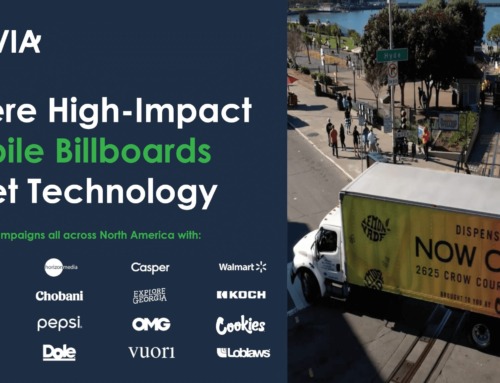The rise of the DIY Health Optimizer, along with a new class of AI Health Advisors 
Inflation and tariffs made everyone a value shopper, even in the pharmacy aisle. After years of price pressure, consumers are exquisitely cost-sensitive, quick to trade a copay-and-visit for cheaper over-the-counter solutions. This reflex is now mainstream behavior, as 81% of consumers now turn to an over-the-counter (OTC) product as their first response to a minor ailment.
Yet, policy makers are constantly getting in the way. The Inflation Reduction Act’s Medicare drug price negotiations are still rippling through the ecosystem, introducing reimbursement uncertainty that especially squeezes independents. The ongoing U.S. government shutdown could soon send health insurance prices skyrocketing for some Americans due to a loss of subsidies.
Meanwhile, the playbook for pharma marketing is being rewritten. A live policy push to restrict pharmaceutical advertising threatens billions in linear TV spend and will reshape how brands build awareness and adherence. The likely end state? Fewer broad-reach claims, more context-rich education in owned and clinical channels, and heavier reliance on peer-validated ecosystems.
And yes, the mood is sour. Consumer discontent with the U.S. healthcare experience — high costs, opaque billing, fragmented handoffs — has hardened into a cultural stance. Call it the “Luigi Mangione sympathy”: a shorthand for rising public empathy with the average patient who did everything “right” and still got lost in the maze.
In this broader context, we found two intersecting trends in the consumer healthcare space that signal a strong desire for patients to regain some control over their health and wellness, and how AI’s impact on the healthcare industry is playing out on the consumer front.
The Rise of the DIY Health Optimizer
The consumer has moved from patient to pilot. Wellness is no longer a side quest; it’s identity — and increasingly, a premium one. Social wellness clubs and “anti-spas” have turned recovery into a lifestyle, while ultra-premium longevity programs (think $40k memberships bundling training, nutrition, sleep, and bodywork) signal an elite tier of demand that then diffuses down the funnel via influencers and aspiration.
GLP-1s poured gasoline on this dynamic. Explosive demand for weight-loss injectables created an echo economy of side-effect solutions, muscle-preservation programs, and a torrent of creator-driven advice that sometimes shades into misinformation and even counterfeit risk. For marketers, that means protocol thinking matters as much as product thinking — people want a plan they can live with, not just a SKU.
Wearables have made data the new pre-appointment. Individuals arrive at the pharmacy or portal with HRV, sleep, or CGM trends and expect someone to translate. Even within the file cabinet of life, pets now have “pup-tivity” graphs. Brands that meet this curiosity with guidance — without drifting into diagnosis — win time, trust, and recurring engagement. Frontline teams, especially in retail, are evolving into “data-savvy health coaches” who can contextualize metrics and route appropriately.
This trend also has a shadow side. The MAHA movement — extreme self-optimization at any cost — shows how algorithmic incentives can turn curiosity into overreach. Thoughtful brands step in with credible, comprehensible content and clear hand-offs to clinicians, so ambition doesn’t outrun evidence.
AI Health Advisor & Companion
Patient-facing AI is graduating from static chat to always-on companionship that plugs into wearables, microphones, and health-system workflows. The near-term reality is pragmatic: triage that normalizes symptoms, directs to the right human first time, follows up between visits, and escalates when risk rises. This isn’t theoretical; FDA-cleared handhelds are flagging suspicious skin lesions, virtual derm clinics are shortening time-to-answer, and a smartphone app can now match clinicians at diagnosing ear infections.
Perhaps most strikingly is how AI bots are reshaping mental health support. AI chatbots can be of great help to those in need by filling the long, quiet gaps between appointments with 24/7 check-ins, mood tracking, and bite-sized CBT-style exercises that can lower access barriers and reduce stigma through anonymity and immediacy. Yet, the same traits that make them helpful also make them risky and even dangerous, as they can over-reassure, “hallucinate” guidance, or mishandle sensitive data, and they shouldn’t be a substitute for a clinician’s judgment or rapport. The real promise lies in pairing bots with clear guardrails, so automation supports adherence and early intervention rather than trying to be therapy.
Companion experiences are also formalizing. AI “friends” that once targeted loneliness are informing structured mental-health and chronic-care programs, while primary-care flows increasingly start with an AI intake before a clinician visit. Expect governance and compliance to tighten in parallel: Europe’s AI Act has set disclosure and risk-management expectations that will shape product and messaging in the U.S. as well.
The diagnostics frontier is coming home. Consumers now expect the COVID-era convenience of rapid, private tests to extend to other conditions, and even “smart” fixtures are joining the health stack. For brand builders, that means the decision moment can be a bathroom mirror, not a broadcast slot — and the creative canvas must shift accordingly.
The Future of Healthcare: How Consumers are Rewriting the Care Journey was originally published in IPG Media Lab on Medium, where people are continuing the conversation by highlighting and responding to this story.




